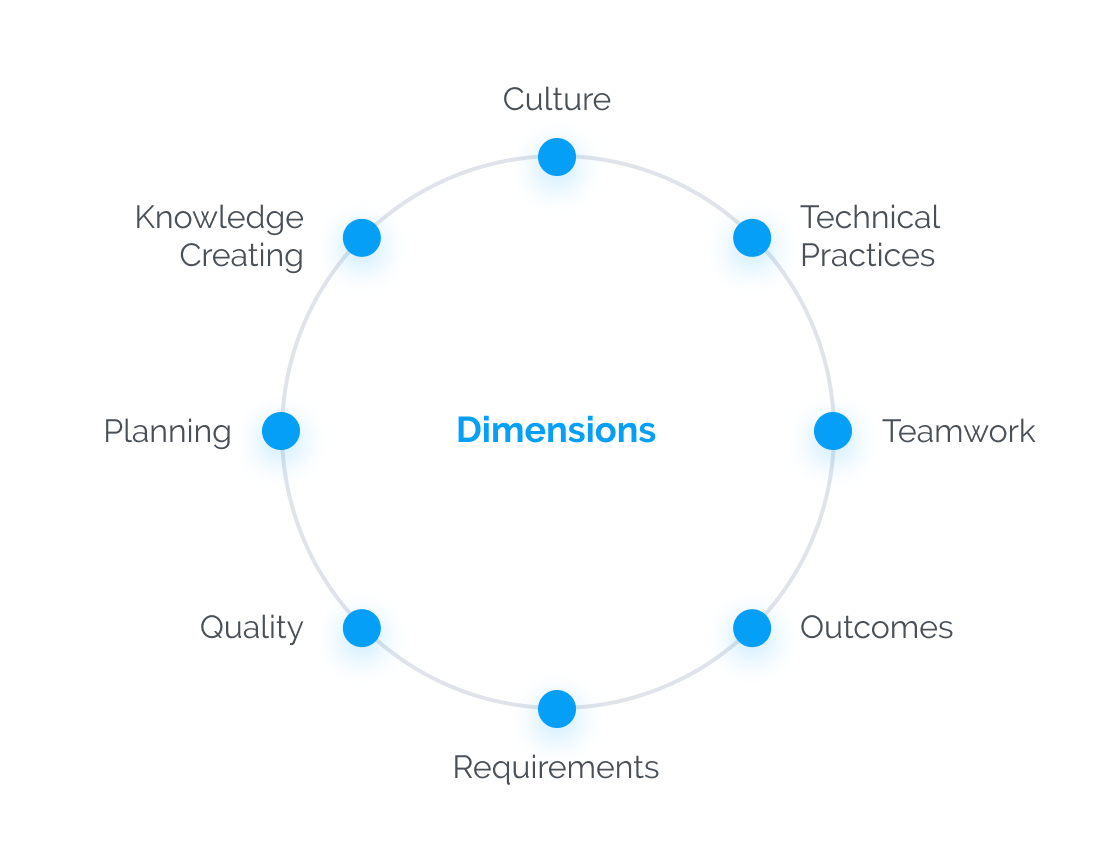Comparative Agile
Leveraging the world's largest Agile assessment database, you can quickly and reliably instill a data-driven continuous improvement culture by benchmarking your efforts against the CA World Index, your specific industry and your own organization at different points in time.
Created by:

The results will provide you with a quick, yet comprehensive view of your company's level of agility
From the team to the enterprise level - and help you make tactical, on-the-ground recommendations while shaping a long-term, enterprise transformation strategy.
Comparative Agile Assessment
Business agility is not a destination - a company is never done “being agile.” Rather, becoming an agile organization entails continuously validating assumptions - and constantly learning to improve and adapting the way it operates. Our Comparative Agile assessment, focused on teams practicing agile and Scrum, will provide you with unique, industry-specific intelligence that inspires action.
Comparative Agile Core Concepts
Created by thought leaders Mike Cohn and Ken Rubin, Comparative Agile measures how teams perceive they are preforming across eight dimensions of agility.

Sample Questions
Teamwork
Management sets goals and doesn't tell team members how to achieve them.
Requirements
Requirements are represented at different levels of detail based on how soon the team expects to implement them.
Planning
Technical team members and product owners collaborate in determining what features will be included in the release plan.
Technical Practices
Technical debt (i.e., accumulated undone or poorly done work) is made visible to both technical team members and stakeholders.
Quality
Testers are involved and productive right from the start of each iteration.
Culture
When faced with a situation where scope cannot be met with the allotted resources in the allotted time, the team's initial reaction is to prioritize and explore tradeoffs.
Knowledge-Creating
Iteration reviews are attended by product owners, stakeholders, and team members who provide actionable feedback.
Outcomes
Our customer(s) are more satisfied with the usability of our products than before.
Teamwork
Formal written documents are used to supplement rather than replace faster, more informal communication.
Top Features
Benchmark your performance against other companies in your industry
Quickly identify where you should invest your efforts and improve where it matters to your teams
Scale easily - perform analysis at the team, program and organizational levels
Deploy a data-driven continuous improvement strategy

